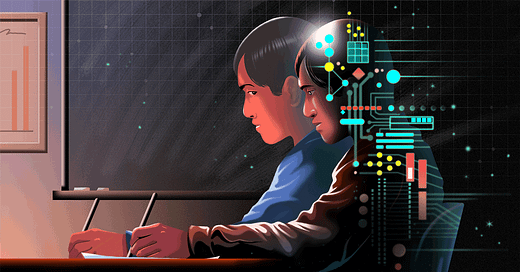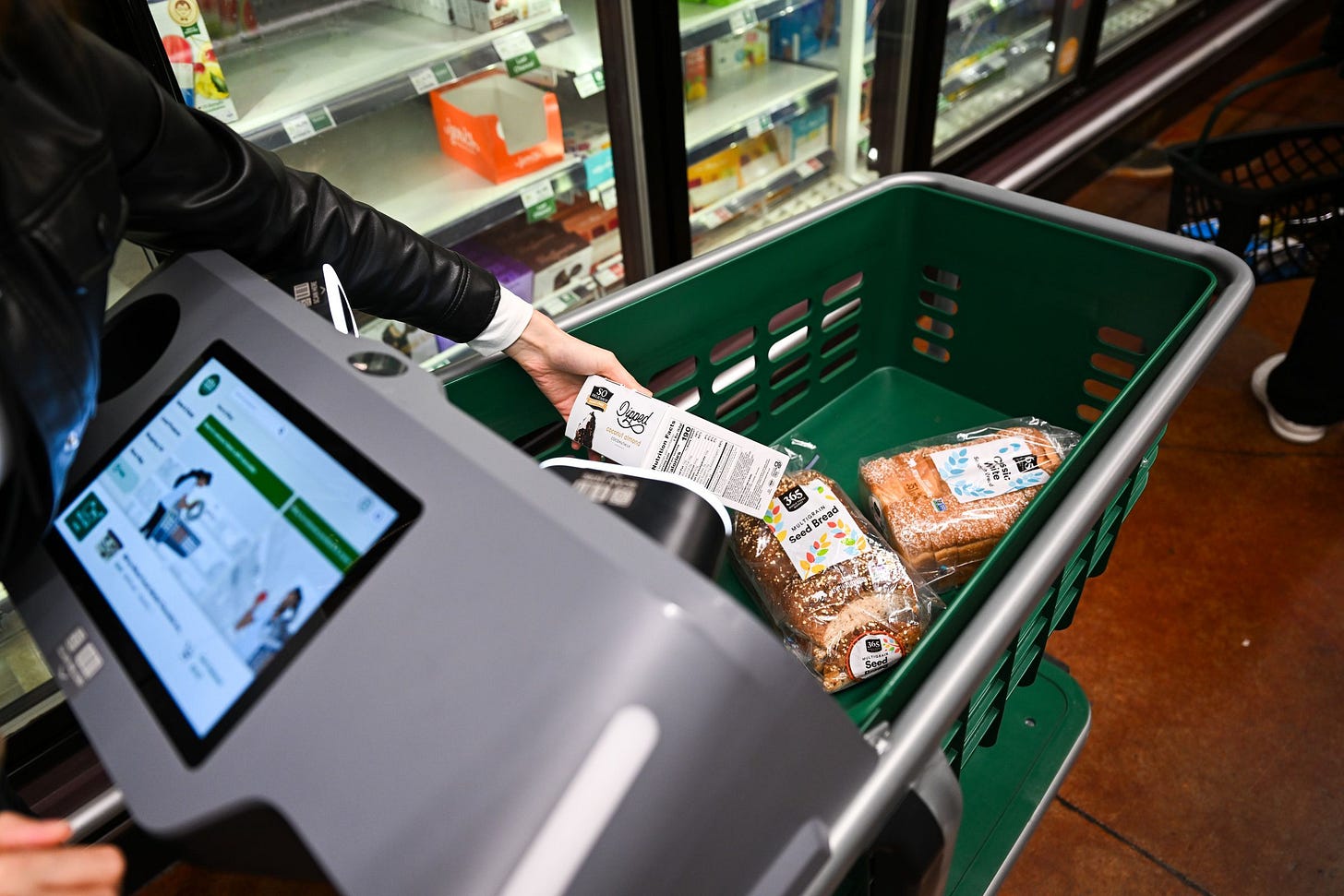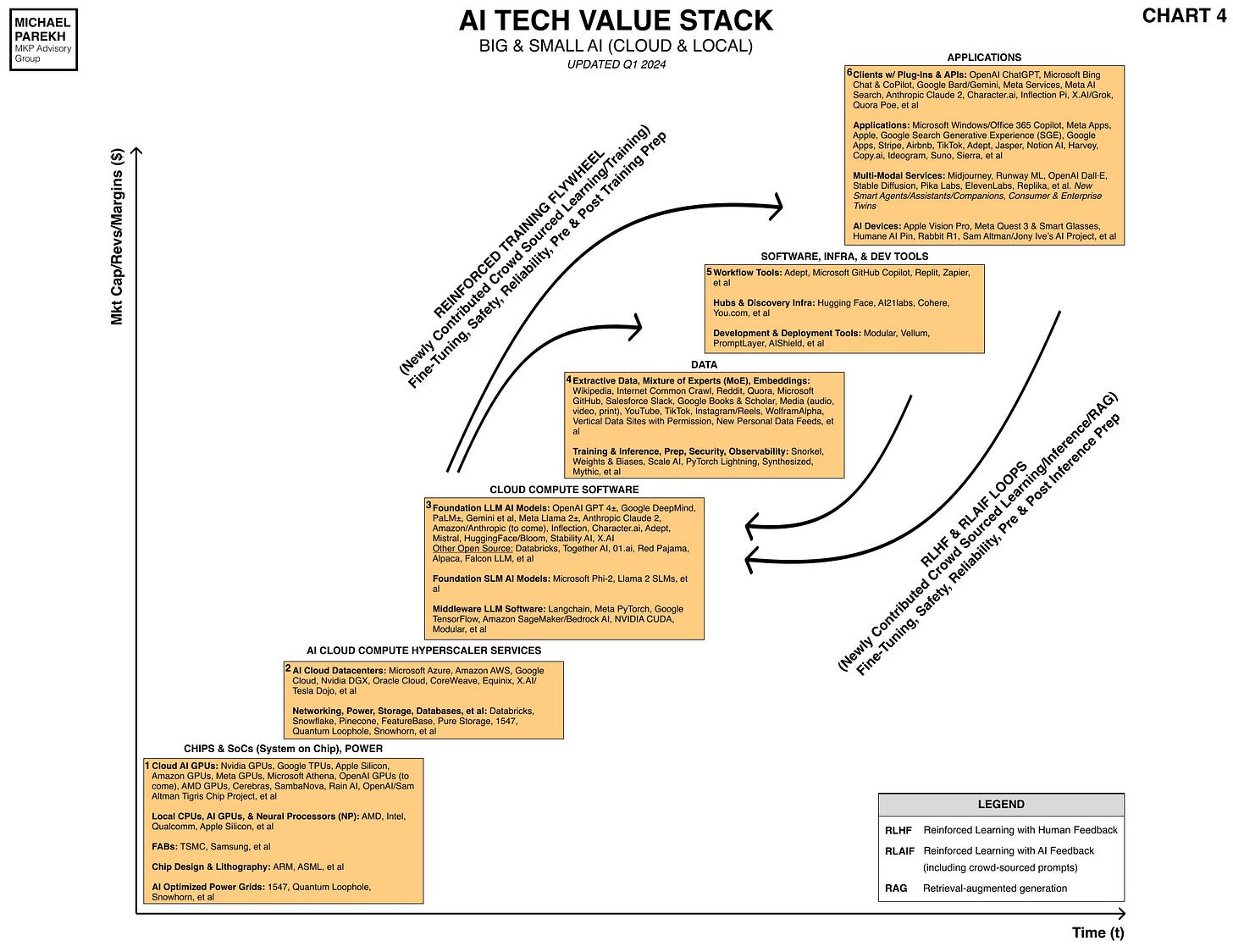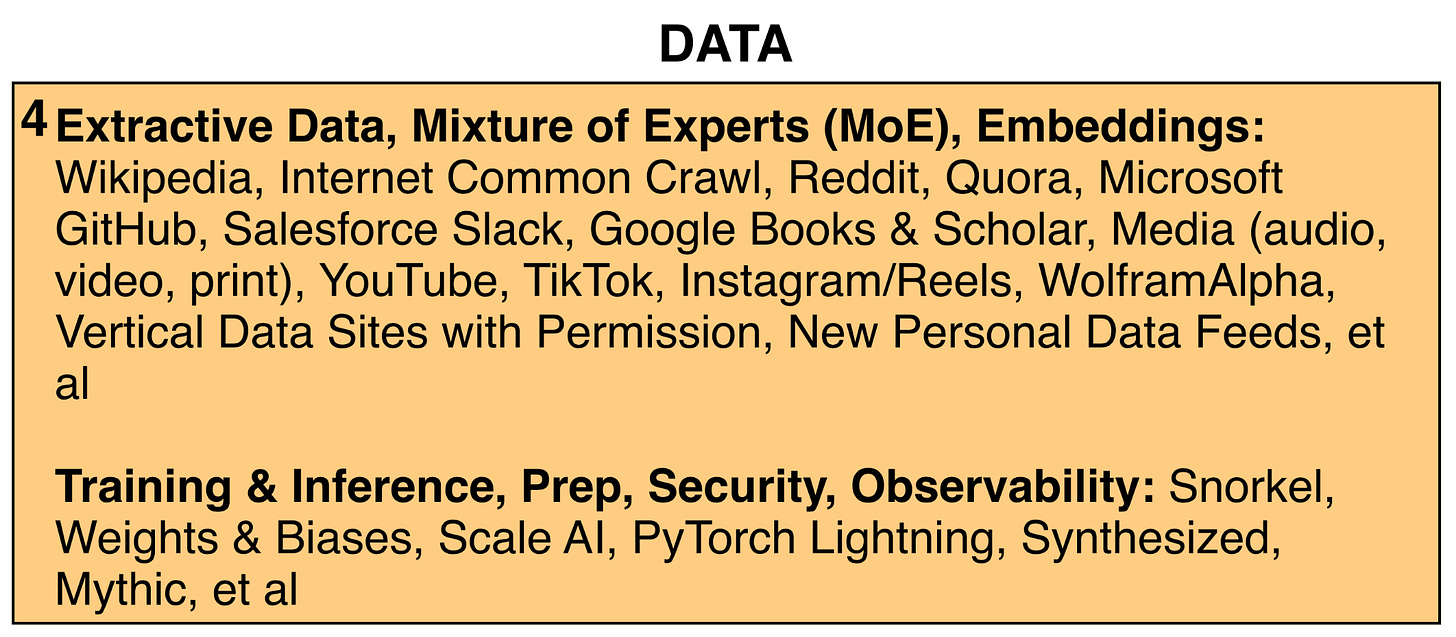One of the earliest pieces on this site was on the top two societal fears of AI: Safety and Jobs. And as I went on to outline in that post, AI drives more jobs behind the scenes than generally realized and/or acknowledged.
Especially in the burgeoning task of labeling and prepping the ‘Extractive Data’ that drives today’s ever larger Foundation LLM AI models. I outlined this exponentially exploding ‘AI Data Quest’, a few days ago.
This week saw Amazon take a big step back on its multi-year investment to develop it’s ‘Just Walk Out’ computer vision AI driven technology, as the Information reported:
“Amazon used workers in India to label the data that trained its object-recognition AI. They also served as backup reviewers for problem transactions.”
“Amazon’s grab-and-go checkout system, Just Walk Out, has been a centerpiece of its ambitions to transform bricks-and-mortar supermarkets. Now Amazon is gearing up to open a new batch of grocery stores after an 18-month pause—and it’s ditching the technology.”
“One factor is that Just Walk Out can be expensive to install and has relied on humans to double-check transactions, a process that is particularly complicated in larger stores and with loose items like certain kinds of produce.”
“Just Walk Out — like many AI systems — relied a lot on old-school human labor.”
“The AI industry relies heavily on cheap labor, often in developing countries, for data labeling tasks.”
While Amazon maybe scaling the technology down in large supermarkets, opportunities still abound for smaller shopping environments and in different forms of AI scanning.
Zooming out, this AI Data labeling task has proven a human-intensive task for the broader task of Data prep and curation for the AI Tech Wave to date, the critical Box 4 below:
In particular note Scale AI in that Box #4, which is one of the leading Data curation companies for most of the major Foundation LLM AI companies and the government.
Companies in Box #3 like OpenAI, Microsoft, Meta, Amazon and many Government agencies, particularly on the Defense department front. Scale AI is in the process of completing a major $13 billion valuation funding round, as noted by the Information a few days ago.
Scale AI and the AI industry at large has long relied on hundreds of thousands of workers overseas to do the tedious task of data labeling for it’s burgeoning set of customers, the Washington Post outlined last fall:
“In a coastal city in the southern Philippines, thousands of young workers log online every day to support the booming business of artificial intelligence.”
“In dingy internet cafes, jampacked office spaces or at home, they annotate the masses of data that American companies need to train their artificial intelligence models. The workers differentiate pedestrians from palm trees in videos used to develop the algorithms for automated driving; they label images so AI can generate representations of politicians and celebrities; they edit chunks of text to ensure language models like ChatGPT don’t churn out gibberish.”
“More than 2 million people in the Philippines perform this type of “crowdwork,” according to informal government estimates, as part of AI’s vast underbelly. While AI is often thought of as human-free machine learning, the technology actually relies on the labor-intensive efforts of a workforce spread across much of the Global South.”
“The mathematical models underpinning AI tools get smarter by analyzing large data sets, which need to be accurate, precise and legible to be useful. Low-quality data yields low-quality AI. So click by click, a largely unregulated army of humans is transforming the raw data into AI feedstock.”
“In the Philippines, one of the world’s biggest destinations for outsourced digital work, former employees say that at least 10,000 of these workers do this labor on a platform called Remotasks, which is owned by the $7 billion San Francisco start-up Scale AI.”
This Business Insider piece last year, worth a full read, provided a wider aperture. It outlines the role of humans behind other emerging AI driven tasks and data in warehouses, manufacturing, fast food, and other environments:
“When people start prognosticating about AI coming for our jobs, they love to point to videos of sleek robots and shining screens handling mundane tasks. The McDondald's video shows a machine delivering food at the drive-thru, self-ordering kiosks, and a stark lack of human staffers behind the order counter. At Taco Bell, there are several automated drive-thru lanes. Beyond fast food, impressive-looking robots are working in coffee shops, delivering food, and cleaning floors. On the AI side, tools like ChatGPT have been used to write real articles and take college exams. BuzzFeed recently announced it plans to use AI to help generate content for its site.”
Consider the hundreds of thousands of humans that got all types of work via Amazon’s Mechanical Turk service over the years.
And how self-driving cars have early AI technologies that still need humans en masse.
I don’t agree with the ‘digital sweatshop’ characteristics of some of these narratives. As a first generation immigrant American from ‘the developing world’ myself, I’m a believer in everyone everwhere getting an economic start somewhere. Work is work, and people everywhere have to start somewhere. Whether it’s making garments and sneakers in the developing world for consumers in the developed world, to labeling and curating Data for the latest in LLM AI models. It’s all in an honest day’s work.
I agree with Nvidia founder/CEO and also first generation immigrant from Taiwan, Jensen Huang. He often cites how he got his start washing dishes at Denny’s decades ago, emphasizing that ‘no job is beneath him’.
I’m simply stressing that the AI Tech Wave continues to require human labor in so many forms. And will likely do so for a long time to come. Especially as AI Augments human work in so many forms, both blue and white collar. The current fears of AI taking jobs are likely premature and misplaced, as CNBC notes off an MIT study.
Yes, some current jobs are likely going to be done better by AI driven machines over time. By augmenting humans rather than replacing them en masse.
Technology’s long march through the centuries has also shown that while current jobs in some cases may be ‘taken’ by technology, an abundant array of new jobs are ‘given’ by technology as well. The transitions are of course never easy, but neither is the inexorable march of human progress, individually and en masse.
The AI Tech Wave is likely to prove no different. ‘Just Wait for it’. Perhaps in hindsight, we may even re-define ‘AI’ altogether: ‘Augmenting Intelligence’ instead of ‘Artificial Intelligence’. Until then, humans remain an important input for making AI, just like chips, power and data. Stay tuned.
(NOTE: The discussions here are for information purposes only, and not meant as investment advice at any time. Thanks for joining us here)












